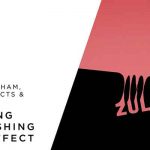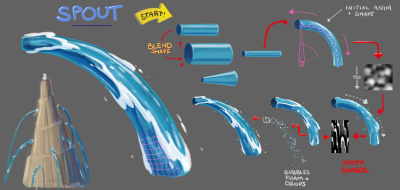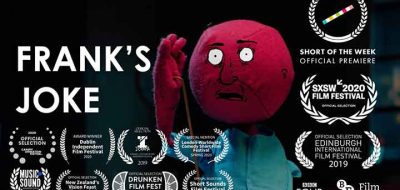From the new album ‘One Hundred Billions Sparks’, released 20 Sept. Pre-order with tour tickets from Max Cooper’s official store: MaxCooper.lnk.to/Rule110
For the ‘One Hundred Billion Sparks’ album project I want to tell a story of our one hundred billion sparking neurones, and the magic which they create: our minds. Early in the story I aimed for the “nuts and bolts” of the processes involved, but not in the sense of showing a neuroscience lecture, I want to find the artistry and beauty of the natural processes involved. Those are what make the richest visuals for my videos and live shows.
Following this reasoning, one idea which came along, was to visualise a “Turing-complete” machine, which is a computer that is capable of performing any computation. This means the design of the computer is versatile enough to allow for any logical operation, within the constraints of the sorts of logical operations our usual computers can do. David Deutsch, amongst others, makes a convincing argument that human brains must also be universal computers in this sense, in his interesting new book ‘The Beginning of Infinity’. So I have some rough grounds at least, for making this link between brains and computers for the purpose of trying to get some hint of the visual essence of thought.
The interesting aesthetic link comes in via the work of Stephen Wolfram, from his 2002 book, ‘A New Kind of Science’, where he shows that simple “cellular automata” models, growing blocks of binary colour following simple rules, can create rich behaviours in their growth patterns, and even yield a system capable of Turing-completeness. Following a systematic exploration of the simplest possible rules governing cell duplication, Rule 110 is the first rule which displays Turing-completeness (web.archive.org/web/20160528014857/http://www.complex-systems.com/pdf/15-1-1.pdf), and is the simplest visual system that I know of which embodies this attribute.
The really interesting thing is that Rule 110 also displays a very particular visual aesthetic, that of a combination of order and chaos, never totally predictable or totally random. For me, that potential artistic/aesthetic link to universal thought is pretty amazing, and it’s also an aesthetic/property which appears in many other important places in nature (for example maxcooper.net/the-nature-of-nature), as well as being one of the main principles of my approach to music, where a healthy dose of disorder is always important.
After settling on this visual form for the project, I needed to create a piece of music which suited the retro blocky nature, which is something akin to Tetris. My immediate thought was big gated reverb snares and powerful classic synths. It had to be bold and clean in one the large scale, but also full of generative unpredictability. It all fit nicely with what I like to do anyway, and just pushed me in a slightly more poppy direction than anything else on the album. The initial focused time was spent finding the killer chord sequence and bold patch, then setting up a generative seething chaos of synthesis with plenty of random waveforms and modulations, then a long time on the arrangement detailing with more than 100 layers of sounds. I finally added a vocal from Wilderthorn, which I chopped into destruction, just there to add a little hint of humanity in amongst the computation.
The final step in the process was to chat to the great visual artist, Raven Kwok, about the ideas and what I would like from the video. I was really happy when Raven showed me that he wasn’t just going to make an artistic interpretation of Rule 110, but had actually built his own version of the real system! So the video shows an authentic pattern-generation of Rule 110, where we can see moments of repetition and pattern, but never in perpetuity, it always returns to disorder. The colours and 3-dimensional explorations are Raven’s extension of the basic system.
I still find it counter-intuitive that a simple deterministic system like this can yield undecidability in the content of its output, and I find it inspiring that this property relates to universal computation. It seems to me, at least, like the finest artistry. That’s why I wanted to include this story in my project. Perhaps those of you who are computer scientists will see that it must be so and that it is a trivial connection, if so, you’ll have to explain that to me some time!
–
Please sign up to the mailing list for news and exclusives: maxcooper.net/#join
Pre-order ‘One Hundred Billion Sparks’ with tour tickets from the official store: MaxCooper.lnk.to/Rule110






